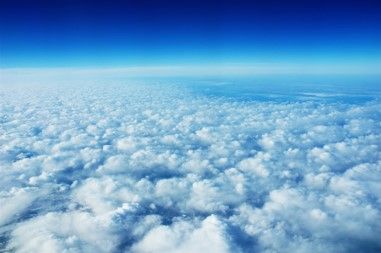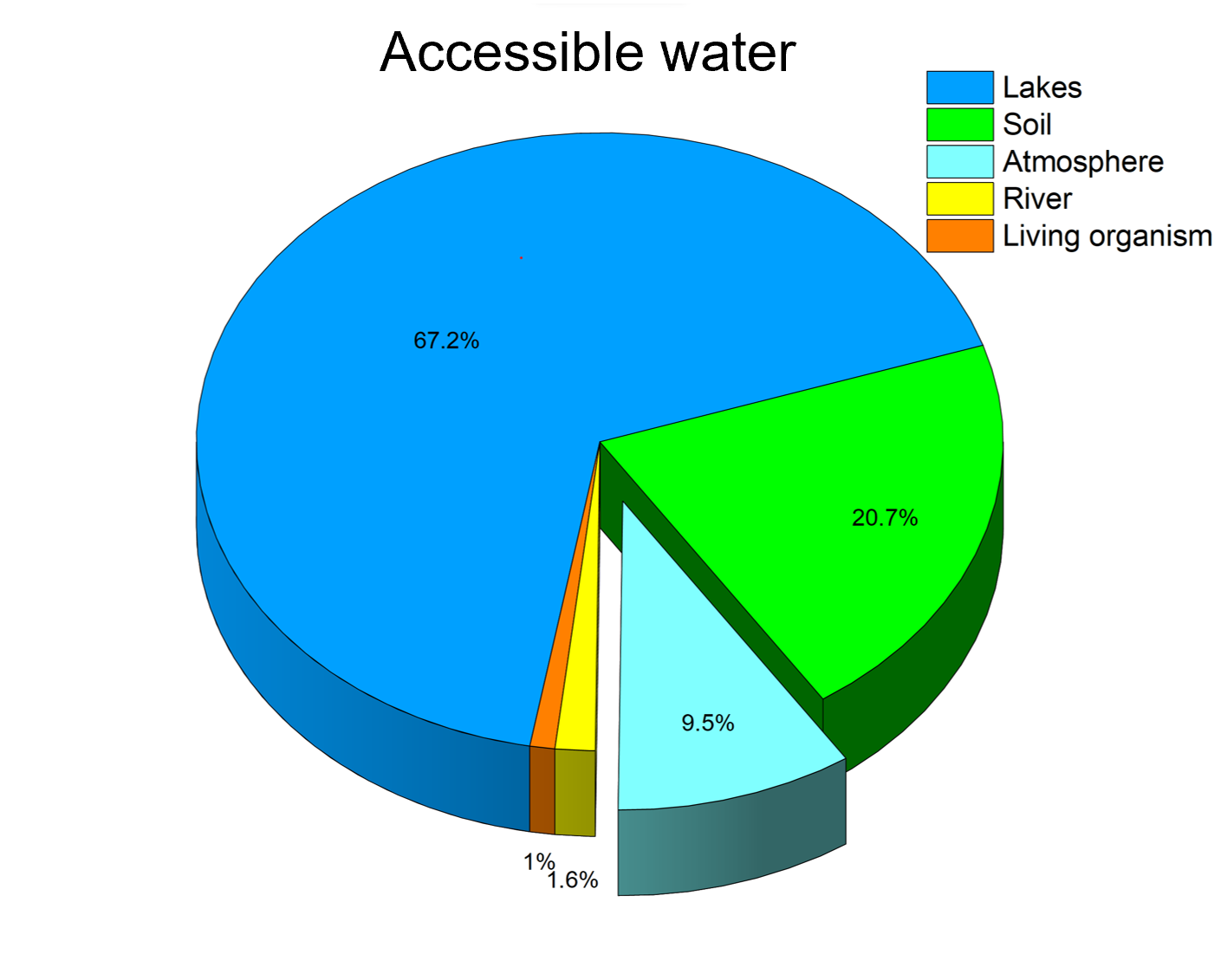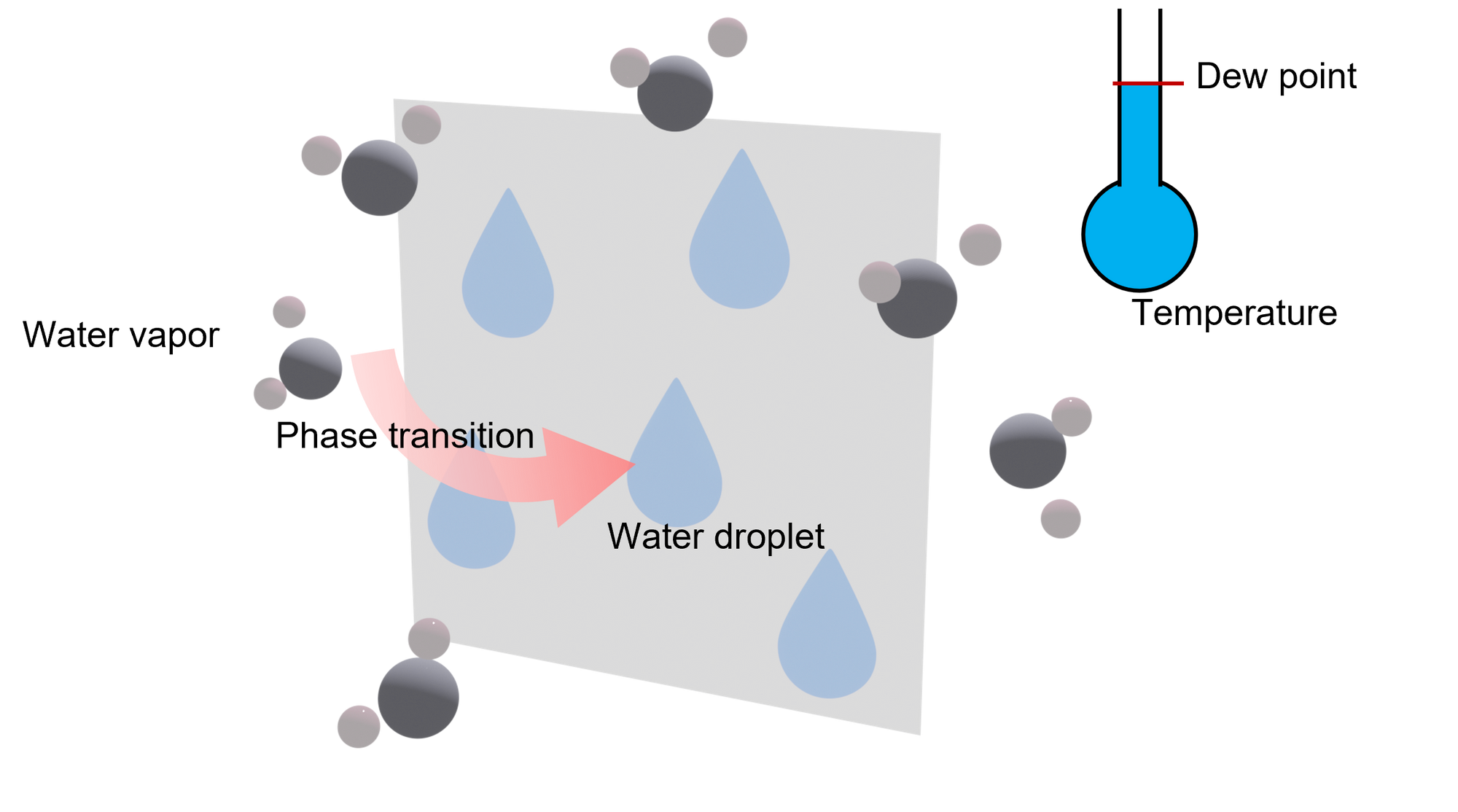Atmospheric Water Harvesting (AWH)


According to the World Resources Institute, there will be 3.5 billion people facing the water shortage situation by 2025. Therefore, enlarging our water source becomes an urgent problem. That is why Atmospheric Water Harvesting has been under concern. Atmospheric water is the third largest accessible water source, which constitutes 9.5% of the total accessible water source (Figure 1).
There are three methods in AWH, which is Fog harvesting, Dew harvesting, and Moisture harvesting. In my work, I had adopted the Dew harvesting because of the advantages:
- No geometical limitation
- Involving in extensive applications, such as electronic device

When the water vapor dropped to the temperature below the dew point, condensation happened (Figure 2). If the foreign substrate was involved in the condensation, we call it heterogeneous condensation, otherwise, we call it homogeneous condensation. Heterogenous condensation is more favorable than homogeneous condensation in terms of thermodynamics. Therefore, the common practice in Dew harvesting is to provide a foreign substrate for condensation to take place. My project started by syntheisizing different materials to participate in the condensation.
Copper and Teflon-coated Silicon Wafer

Copper and Teflon-coated Silicon Wafer represent the hydrophilic and hydrophobic, which is widely adopted. I had conducted the condensation experiment to examine their AWH performance (Figure 3).
For the hydrophobic surface, droplets are spherical and they are separated. Because condensed droplet has a relatively small interaction with the hydrophobic surface, the water does not want to spread over the surface. For the hydrophilic surface, droplets formed a "water puddle"1. The difference originates from the water affinity, namely wettability. Because droplets have stronger interaction with the hydrophilic surface, the water like to spread over the surface. The condensation mode of the hydrophilic and hydrophobic surface is classified into Filmwise condensation (FWC) and Dropwise condensation (DWC), respectively.
Although the difference in the condensation mode of the hydrophobic and hydrophilic surfaces, they share the same departure mechanism-Gravity. When the droplet grew to the critical size that gravity was large enough to overcome the adhesion between the substrate and droplet, the droplet departed. The critical size of the hydrophilic and hydrophobic surface is Ac ~ 14mm2 and 2.7mm.
DWC is preferable than FWC because the droplet with a smaller size is more efficient in heat transfer.
My result matched with it, where the water harvesting of the hydrophobic and hydrophilic surface is 6.72 x 107 μm3 /hour and 4.07 x 107 μm3 /hour respectively.
Reference:
- Lee, A., Moon, M. W., Lim, H., Kim, W. D., & Kim, H. Y. (2012). Water harvest via dewing. Langmuir, 28(27), 10183-10191.